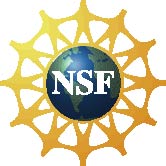WordNet::Similarity
This is a Perl module that implements a variety of semantic similarity and
relatedness measures based on information found in the lexical database
WordNet. In particular, it supports the measures of Resnik, Lin,
Jiang-Conrath, Leacock-Chodorow, Hirst-St.Onge, Wu-Palmer,
Banerjee-Pedersen, and Patwardhan-Pedersen.
We have a mailing
list designed to support users of WordNet::Similarity.
Want to report a bug or request a feature? Do that
here!
Try the Web Interface
here.
(version 2.07)
Download the Current Version (v2.07, released October 4, 2015) from
CPAN
or
Sourceforge
-
Documentation
See the
README and
CHANGES
files, as well as our
TODO list.
This
diagram shows the major modules and functions of WordNet::Similarity
as of version 0.13. (**still CURRENT as of v2.07**)
Browse the current
CVS version.
-
Pre-computed Pairwise Similarity Values for Nouns and Verbs
We are pre-computing all pairwise similarity values for all senses in WordNet,
slowly but surely. This began in June 2010 - by March 2011 we had
completed all verb pairs for all similarity measures, and in August 2011
we completed all noun pairs for the path measure. We continue to work on the
other measures.
-
Information Content Computed on Various Corpora
We have pre-computed information content files from the British National
Corpus (World Edition), the Penn Treebank (version 2), the Brown Corpus,
the complete works of Shakespeare, and SemCor (with and without sense
tags). These were created using the
*Freq.pl programs found in WordNet::Similarity. These information content files should be
used with WordNet::Similarity for the given version of WordNet.
Version Dependencies of WordNet::Similarity
Please note version numbers, they must be exactly as shown.
Bibliography (papers by users of WordNet::Similarity)
Publications
(our papers about WordNet::Similarity)
WordNet::Similarity Development Team
WordNet::Similarity Contributors
Acknowledgments
The development of WordNet::Similarity has been supported by a National
Science Foundation
Faculty Early Career Development (CAREER) Program
award (#0092784, 2001-2007), by a Grant in Aid of Research, Artistry and
Scholarship from the Graduate School of the University of Minnesota
(2003-2004), and by the Digital Technology Initiative of the Digital
Technology Center of the University of Minnesota (2004-2005).



By: Ted Pedersen -
tpederse AT d umn edu



